The removal of four hydroelectric dams on the Klamath River in southern Oregon and Northern California has been recognized as the largest dam removal in U.S. history. More notably, it’s also the largest salmon-restoration project to date.
In late September I watched an excavator take large bites out of the cofferdam at Iron Gate, the most downstream of the dams.
Just over two weeks later, a crew spotted a pair of salmon spawning in one of the tributaries above Iron Gate, where the fish had not previously been able to reach. On Oct. 16 biologists spied fall Chinook salmon at the mouth of a tributary in Oregon. This spot, 230 miles from the ocean, is above all four of the former dam sites.
The speed of the salmon’s return has astonished even the most seasoned biologists.
“Even though we’ve been anticipating the moment, it’s not until you see that first Chinook…I don’t know; I’m still in shock,” says Mark Hereford, project leader of the Klamath anadromous restoration program at Oregon Department of Fish and Wildlife, who found the fish in the Oregon tributary.
News of the salmon’s return prompted a flurry of texts and excited phone calls among fish advocates. Their return is especially poignant to members of the Klamath Tribes, whose ancestral lands include the upper Klamath Basin above the dam sites. With the construction of the dams, salmon, or c’iyaals, had been absent from the Upper Basin for over 100 years.
Now attention is shifting from the massive dam-removal project to the equally enormous task ahead: restoring the Klamath watershed. Biologists will look to the fish themselves for guidance.
All Hands on Deck
The Klamath River supports fall and spring Chinook, coho, and steelhead, along with other important species like Pacific lamprey. All are expected to benefit from dam removal.
Biologists are using every means possible to detect and track salmon as they explore their new habitat. The California Department of Fish and Wildlife has installed “video weirs” to capture images of salmon in key tributaries; the agency also has crews on the ground surveying spawning salmon. Also in California, the nonprofit Cal Trout has installed a sonar monitoring station just above the former Iron Gate dam. Cal Trout is also leading a project to sample fish using special nets near the Iron Gate dam site; these hands-on surveys will provide a week-by-week snapshot of fish in the river. The crew are fitting some of these fish with radio tags and passive integrated transponders, or PIT tags, so they can track them as they move upstream.
In the upper basin, ODFW is working with the Klamath Tribes, university researchers, and other partners to conduct spawning surveys and set up monitoring stations to detect tagged fish.
“It will help us answer the question: Are fish moving into the new habitat, and if so, what species?” says Hereford.
This intensive monitoring will continue for at least four years. Besides informing restoration, the efforts will also reveal how fish respond to some of the challenging conditions in the upper basin.
The Klamath River starts in Upper Klamath Lake in southern Oregon and passes through two small dams before crossing into California.
Most of the vast wetlands surrounding Upper Klamath Lake were converted into farmland over a century ago. The lake is naturally productive, thanks to volcanic soils high in phosphorus, but the removal of filtering wetlands and channelization of tributaries above the lake let in a flood of nutrients. The lake is frequently plagued with large algae blooms and poor water quality.
There’s ideal habitat in the tributaries above Upper Klamath Lake, but to reach it, cold water-loving salmon must navigate an expanse of warm, shallow, and at times oxygen-poor water. How will they fare?
To get a jump on this question, fisheries biologists have been releasing young hatchery-bred spring Chinook into tributaries above the lake.
What they’ve witnessed is encouraging, says Hereford, who is leading the project, now in its third year. They’ve detected fish everywhere they’ve set up monitoring stations. What’s more, fish are finding cold, spring-fed pockets in the lake.
“Some of them are able to find that cold water refuge and staying there the whole summer, which is great,” says Hereford. There’s abundant food in these cold pockets, which allows the fish to grow nice and big before they head downstream toward the ocean. Bigger fish generally survive better, says Hereford.
The young spring Chinook they release later this fall will actually have the chance to reach the ocean.
“This year will be really interesting because it’s the first time we’ve released fish into a free-flowing river,” says Hereford.
Young fish moving downstream and adults swimming upstream will still have to navigate two small dams that were not removed. Both have fish ladders, but the openings in the ladders are too small for large adult salmon to pass through. (This problem will be fixed: A feasibility study is already underway.)
Radio-tagged and PIT-tagged juveniles will tell biologists how they’re getting through the dams and inform future solutions to improve passage.
Long-Term Recovery
Large dams have contributed to steep declines in salmon runs across the West.
“When we have dams in place, we have a lot of constraints on salmon,” says Shari Witmore, fish biologist, West Coast Region at NOAA Fisheries. “Layer on climate change, water management, and diversions, and that further constrains their ability to respond to local conditions and access different types of habitat. Overall, it’s more of a struggle to have sustainable, diverse populations.”
As the pioneering fall Chinook demonstrate, they’re good at finding cold, spring-fed streams. Now that the dams are gone, they can access more of them.
“When you’re talking about a large and diverse system like the Klamath, the tributaries and the main stem all work together like a family,” says Michael Belchik, senior fisheries biologist at the Yurok Tribe. “Some of the tributaries are cold-water refuges when the main stem Klamath gets warm.”
The dams on the Klamath didn’t just physically block fish; they starved downstream reaches of the sediment and gravel they need to construct their nests, or redds. The reservoirs also acted like giant heat sinks, altering temperatures downstream. They harbored massive algae blooms that compromised water quality and submerged cold springs that are ideal spawning grounds.
Already Belchik has noted the return of cooler temperatures to the river, which bodes well for the fall run of Chinook.
“If we’re seeing a couple fish here or there in certain tributaries, we’re going to see a lot more in the upcoming years as the river recovers, the clarity returns, and the spawning gravels are revealed,” says Belchik.
Dam removal is just the beginning. As exciting as it is to see the return of salmon to their historic habitat on the Klamath River, it will take several fish generations for them to establish sustainable populations, says Witmore.
Other large dam-decommissioning projects have shown that fish often respond quickly to removal of physical barriers. After two dams were removed from the Elwha River in southwest Washington between 2011 and 2014, steelhead returned to habitat above the dam sites almost immediately. Chinook salmon have also rebounded, albeit more slowly. Last year the Lower Elwha Klallam Tribe was able to open a small subsistence and ceremonial coho salmon fishery — an important milestone in the recovery of these fish populations.
Restoring Habitat
Jenny Creek is one of the first tributaries to flow into the Klamath River above the Iron Gate dam. Before and after photos illustrate the dramatic effects of dam removal.

My “before” picture, from September of 2023, was taken from a bridge that passes over the creek right before it entered the Iron Gate reservoir. Fat and sluggish, the backed-up creek is painted with swirls of green algae. You can’t smell the anaerobic rot, but it’s not hard to imagine.
“If you look at Jenny Creek and the Klamath main stem itself in the Iron Gate reservoir footprint, you see thousands, tens of thousands of willows coming up,” says Belchik. “A whole riparian forest is being reborn even right now.”

This tributary is one of several targeted for restoration in this and the other reservoir footprints. Crews have already been sculpting floodplains and planting new vegetation on bare ground that was uncovered when the reservoirs were drained. They’re also placing whole trees, with their roots intact, across streams to help create pools and spawning habitat.
Restoration is taking place not just in the reservoir footprints but throughout the watershed. Even groups that have historically clashed over water are cooperating to get this work done. Just last month the Klamath Water Users Association and several Tribes announced they had agreed on 19 restoration projects throughout the basin.
The old tensions are still there: Water remains a scarce resource with too many demands on it. But there does seem to be a newfound understanding that we allbenefit from a healthy Klamath watershed.
Meanwhile everything biologists and other scientists are learning on the Klamath will add to the body of knowledge around dam removal.
“What are the consequences? What happens to the fish afterward? What if there’s spawning areas below the dam? What happens with the sediment?” says Belchik. “We’re going to be able to answer these questions better and better as we move forward.”
A Triumphant Return
On Nov. 3 I took my husband Brint to see the Chinook spawning at one of the tributaries. By then biologists on spawning surveys had counted more than 100 fish on a single day in that stream alone.
We walked downstream. The creek is only calf-deep in places, but the 30-inch salmon were not easy to spot. We had to learn to see the dark, undulating torpedo shapes.
The landscape opened up as we neared the confluence with the Klamath. This part of the creek had been submerged under a reservoir less than a year ago. It was treeless, and the mud adjacent to the stream banks had dried and cracked into blocks.
As we walked we were joined by others curious to witness history — hunters who were camping nearby and families on a Sunday outing. Several kids tested their balance on the large logs that had been placed across the stream, looking for fish.
“Salmon!” a boy screamed, pointing. A startled Chinook breached with a splash, then darted downstream. The boy’s mom explained why it was important not to disturb the fish while they were hard at work making more salmon.
Brint and I grinned at each other. We too were screaming “salmon,” though silently: the simple thrill of seeing these big, beautiful fish amplified by the triumph of their homecoming.
This story originally appeared in The Revelator and is part of Covering Climate Now, a global journalism collaboration strengthening coverage of the climate story.






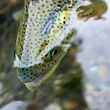
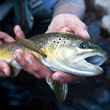
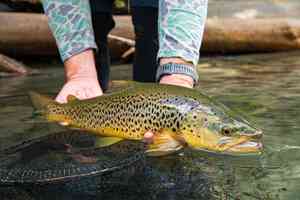


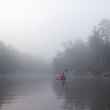
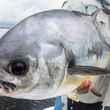


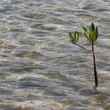







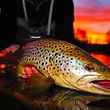
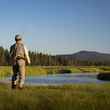
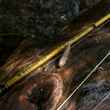
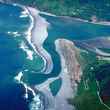

Comments